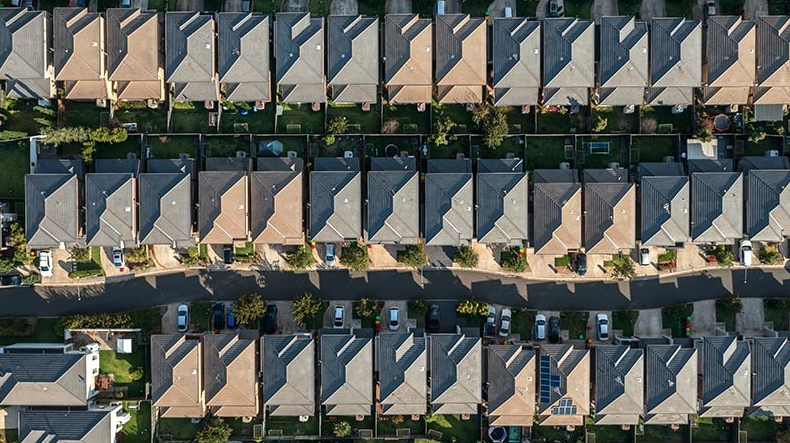Revealed: How many landlords sold up in Queensland
Mar 2024Karen Millers
Categories
Location ReportsMedia releasesNational market updatesPersonal advisersPIPA AdviserPIPA Annual Investor Sentiment SurveysPIPA Member ProfilesPIPA video updatesPIPA webinarsPodcastsProperty advisersProperty newsLatest Articles
Location Report – City of Geraldton
Which property cycle are we in?
Rent rises ease but crisis’ link to population density found to be tenuous
Jordan van den Berg: The ‘Robin Hood’ TikToker taking on Australian landlords
Victorian property investors face yet another new property tax as council tests levy
Thousands of landlords listed rental properties for sale in Queensland in the first two months of this year in a further blow to already struggling tenants.
Exclusive research by SuburbTrends has also revealed the hotspots where the most investors are selling up, and where renters might soon be facing eviction — if they haven’t already been ordered out.
The data shows 6,248 ex-rental homes hit the market across the state from January to February, accounting for 21.65 per cent of total listings.
SuburbTrends founder Kent Lardner said any area with a two percentage point spike or more was concerning, as landlords buckled under the higher costs of holding their property with rising interest rates and inflation, coupled with a punitive legislative environment.
Brisbane’s northern and southern suburb belts recorded a significant uplift in landlord sales, while in regional Queensland the area covering Mackay, Isaac and Whitsunday notched up a three per cent increase.
“I think the alarm bell has started now,” Mr Lardner said.
“There’s always a natural number of people selling rentals. But the thing that is not normal is that significant spike.”
The Gold Coast suburbs of Southport and Surfers Paradise had the highest number of landlord sales over the two months, with 65 and 61 transactions respectively, followed by Nundah (56) and Roma (54).
Coorparoo and New Farm were next, then Moranbah, Pimpama, Maroochydore and Fortitude Valley.
Regions recording strong rental yields in North Queensland and outside Brisbane bucked the national trend.
The number of rental homes on the market dropped a massive seven per cent in Townsville compared to the same period in 2023, and three per cent in Toowoomba.
Mr Lardner pointed to Cairns and Townsville as areas where rising rents and falling vacancy rates had given investors more reason to hang on despite increasing loan repayments and insurance bills.
An annual survey of investors by peak industry body, the Property Investment Professionals of Australia (PIPA), found 40 per cent of landlords sold one or more properties in Queensland in 2023.
PIPA chair Nicola McDougall said investors had sold more properties in Queensland than in any other state for a number of years, and pre-dating the recent record run of interest rate hikes.
“So, if it wasn’t for financial reasons back then, why were investors selling? Generally speaking, it was because they had simply had enough of being treated appallingly by policy-makers with policies such as the emergency tenancy laws during the pandemic, as well as the failed Queensland interstate land tax, proving to be a bridge too far for many,” Ms McDougall said.
“Queensland investors want and deserve policy stability when they provide the lion’s share of rental housing over decades of ownership – not continual market intervention, generally for political purposes.”
Ms McDougall said a main reason cited by investors exiting the market this year were changes to tenancy legislation, impacting their control and increasing their compliance and holding costs.
The latest round of rule changes banned rental bidding, attached annual rent price caps to the property rather than the tenancy, and could potentially allow tenants to make modifications to the home without the owner’s consent.
“Private investors are the key to solving the current rental crisis, yet, there doesn’t seem to be any appetite from political leaders to not only encourage them into the market, but to incentivise them to stay over the long-term,” Ms McDougall said.
“If the exodus of investors from Brisbane and across the Sunshine State isn’t halted, then the rental crisis will become even more entrenched, which will push rents higher and result in even more people becoming homeless.”
Camp Hill investor David Barry said “continued policy changes in Queensland and rights being stripped from investors” drove him to sell one of four properties he owned in Brisbane.
“I decided to buy instead in WA,” the 46-year-old program manager said.
“The risk versus reward is just not there anymore. It is smarter to invest in other areas where the returns are similar but the risk is lower.”
Mr Barry sold a two-bedroom unit in Ascot for $680,000 in October 2023.
He had paid $617,500 for the apartment five years earlier, and it was last listed for rent at $575 a week in 2022.
While landlords were often made the scapegoat for rising rents, Mr Barry said investors paid higher interest rates, more stamp duty on purchases, and inflated insurance premiums.
“Governments can only tax investors so much until they have to pass on costs, or alternatively get out of the market,” he said.
Buyers Agency Australia founder Dragan Dimovski said Brisbane property remained an attractive investment for interstate buyers in particular, given strong migration and infrastructure development ahead of the 2032 Olympic Games.
“While prices in Brisbane have come up a lot, it has traditionally been much cheaper than it was to own an investment property in Sydney or even the outer suburbs of Sydney, and the demand is very strong so investors are finding there is value in holding on,” Mr Dimovski said.
“With everything that is coming up for Brisbane with the Olympics, I find people have a strong desire to buy there among other states.”
Before purchasing an investment property, Mr Dimovski advised taking time to research the suburb. Signs of a strong future market included upcoming major infrastructure or development projects, a local rental vacancy rate of less than one per cent, and proximity to amenities such as hospitals and airports.
Gold Coast real estate principal Michael Kollosche said interest rate cuts predicted from as early as May would coax investors back into the market, in turn easing the housing crisis.
In the latest K Property Insights Report, compiled with industry analyst Michael Matusik, Mr Kollosche tipped six cuts of 0.25 percentage points between now and the end of 2025, bringing the official cash rate to 2.85 per cent.
“Uncertainty has kept investors away over the past few years, but a fall in loan rates will only entice this buyer group back into the market,” Mr Kollosche said.
“Increased investor purchases will help to ease tight vacancy rates in the city as more housing stock is released into the rental pool.
“Hopefully, that will go some way to help alleviate the housing crisis.”
PropTrack’s March Market Insight Report shows the rental market contracted further over the past month, with vacancy sitting at a critical low of 0.95 per cent in Brisbane, and 1.03 per cent in regional Queensland.
Australian Bureau of Statistics (ABS) figures show roughly 34.8 per cent of new home loan commitments by value were issued to investors last year.
Mr Lardner said that statistic was likely reflected in the proportion of investment properties returned to the rental pool by their new owners — meaning about two-thirds of those ex-rental homes were purchased by owner-occupiers.
He the impact of landlords selling up was compounded by rising migration through last year, while approvals for new houses declined.
“If a rental exits and goes to a wealthy new migrant, there’s just one less property for the existing renters in that area,” he said.
Originally Published: Viva Hyde & Nathan Mawby | Geelong Advertiser | 23 March 2024
“Licensed by Copyright Agency. You must not copy this work without permission.”




